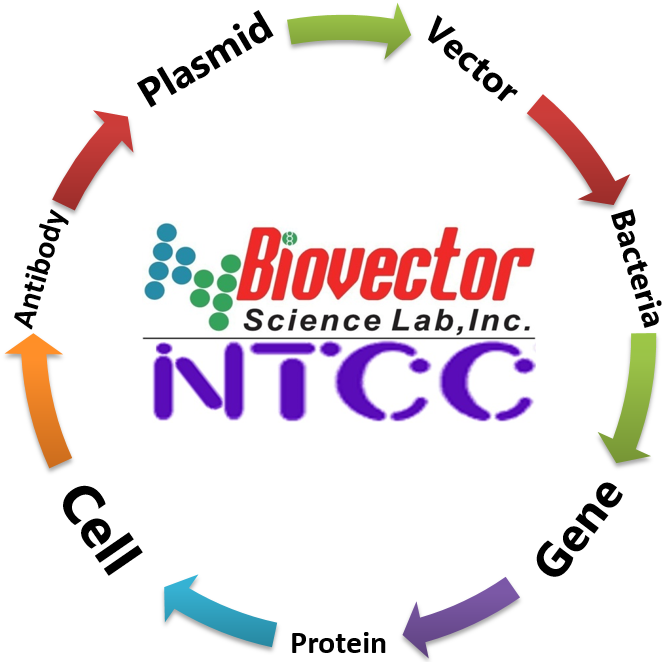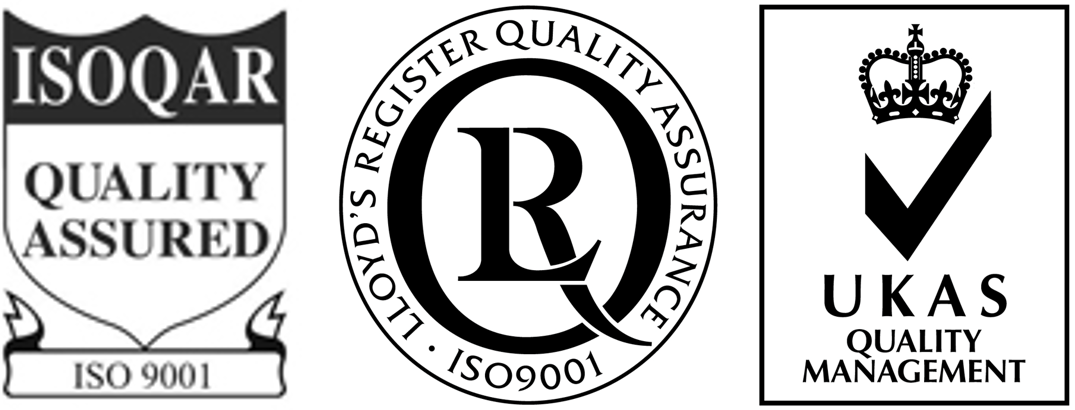NTCC® GM03580 Cell Line细胞株-BioVector NTCC典型培养物保藏中心Coriell GM03580
- 价 格:¥59850
- 货 号:NTCC®-Coriell GM03580
- 产 地:北京
- BioVector NTCC典型培养物保藏中心
- 联系人:Dr.Xu, Biovector NTCC Inc.
电话:400-800-2947 工作QQ:1843439339 (微信同号)
邮件:Biovector@163.com
手机:18901268599
地址:北京
- 已注册
Name:NTCC® GM03580 Cell Line
Category分类:LCL
Cat#货号:NTCC®-Coriell GM03580
Size/Quantity数量: 1 Flask / 2 Vials
Biosafety Level生物安全级别:1
Shipping Info运输方式: RT/Dry Ice
Storage储存方式: RT/Liquid Nitrogen
Species物种来源: sapiens
Age年龄: 34 YR
Gender性别: Male
Description描述: PROTEASE INHIBITOR 1; PI
Remarks: Pi type MZ in serum; donor subject is MZ; the Z allele results from a G>A transition at nucleotide 9989 in exon 5 of the SERPINA1 gene [9989G>A] resulting in a substitution of lysine for glutamic acid at codon 342 [Glu342Lys (E342K)].
Alternate IDs其他编号: GM17045 | GM17374
Cell Type细胞类型: B-Lymphocyte
Source组织来源: B-Lymphocyte
Tissue Type组织类型: Blood
Disease疾病类型:
Gene: PI
Mutations突变: GLU342LYS ON M1A
Karyotypes核型:
Cytogenetics:
Allelic Variant 1: 1
Mutation description突变描述: GLU342LYS ON M1A; This is the most frequent allele leading to a high risk of emphysema (and liver disease) in the homozygote; the allele frequency is 0.01-0.02 in U.S. Caucasians (Crystal, 1989). Nukiwa et al. (1986) demonstrated the val213-to-ala substitution (here symbolized M1A) in PI*Z in addition to the disease-producing glu342-to-lys mutation. Using 2 genomic probes extending into the 5-prime and 3-prime flanking regions, respectively, Cox et al. (1985) identified 8 polymorphic restriction sites for the PI gene. Extensive linkage disequilibrium was found with the PI Z allele throughout the probe region, but not with the normal PI M allele. The Z allele occurred mainly with one haplotype, indicating a single, relatively recent origin in Caucasians. This was an individual who lived in northern Europe some 6000 years ago. Since then, the variant has spread through Europe with a frequency gradient extending from north to south: 5% of Scandinavians, 4% of Britains, 1 to 2% of southern Europeans, and 3% of the heterogeneous white population in the United States are MZ heterozygotes. Curiously, there is a reciprocal distribution of the S variant form: 10% in southern Europe to 5% in the north. As a general rule then, 1 in 10 persons of European origin will be heterozygous for either the S or Z variant, i.e., MZ or MS (Carrell, 1986). Alpha-1-antitrypsin deficiency is said to be rare among Japanese. Kawakami et al. (1981) cited 2 studies in which no Pi Z was found among 965 healthy Japanese and 183 Japanese with pulmonary diseases. This is to be compared with a frequency of 1.6% for Pi Z among Norwegians. From study of 60-year-old twins with ZZ alpha-1-antitrypsin deficiency, one a heavy smoker who developed severe emphysema and the other a lifelong nonsmoker who was asymptomatic with only mild evidence of obstructive pulmonary disease, Kennedy and Brett (1985) demonstrated the importance of the environmental factor. A brother died at age 40 years of emphysema. To study the question of the role of alpha-1-antitrypsin heterozygosity in the etiopathogenesis of chronic obstructive pulmonary disease (COPD) and to obviate the difficulties of precise diagnosis, Klasen et al. (1986) used a well-defined subgroup suffering from so-called 'flaccid lung.' In these persons, there is a loss of elasticity of the lung parenchyma with high compliance. Flaccid lung can be found with a high vital capacity, with spontaneous pneumothorax, in patients with giant bullae, and in all patients with lung emphysema. Klasen et al. (1986) found a relative risk of 12.5 for PI ZZ persons and 1.8 for MZ persons. They concluded that the risk of MZ persons compared to MM persons is almost negligible and that whether the MZ person develops lung disease is probably highly influenced by environmental and perhaps other genetic factors. Clark et al. (1982) reported the cases of 2 brothers with Weber-Christian panniculitis and the alpha-1-antitrypsin Z phenotype. A younger brother had the Z phenotype without Weber-Christian disease. Along with several earlier reported cases, these observations establish a relationship. Hendrick et al. (1988) described 3 patients in whom panniculitis was the presenting manifestation of AAT deficiency. Two were young adults and 1 was a child. The panniculitis in these cases is frequently, although not always, precipitated by trauma. The panniculitis is chronic, relapsing, and widely disseminated with new lesions appearing as old lesions resolve. Dycaico et al. (1988) established transgenic mouse lineages that carried the normal (M) or mutant (Z) alleles of the human AAT gene. All expressed the human protein in liver, cartilage, gut, kidneys, lymphoid macrophages, and thymus. The human M-allele protein was secreted normally into the serum. However, the human Z-allele protein accumulated in several cell types, particularly in hepatocytes, and was found in serum in concentrations 10 times lower than the M-allele protein. Mice in one lineage carrying the Z allele displayed significant runting in the neonatal period and had developed abnormalities in the liver with accumulation of human Z protein in diastase-resistant cytoplasmic globules that stained with periodic acid-Schiff reaction (PAS). Crystallographic analysis of alpha-1-antitrypsin predicts that in the normal protein a negatively charged glu342 is adjacent to a positively charged lys290. Thus, the glu342-to-lys Z mutation causes the loss of a normal salt bridge, resulting in intracellular aggregation of the Z molecule. Brantly et al. (1988) predicted that a second mutation that changed the positively charged lys290 to a negatively charged glu290 would correct the secretion defect. They demonstrated that such was the case: when the second mutation was added to the Z-type cDNA, the resulting gene directed the synthesis and secretion of AAT similar to that directed by the normal AAT cDNA in an in vitro eukaryotic expression system. In general it may be possible to correct human hereditary disease by inserting an additional mutation in the gene. Hejtmancik et al. (1986) compared prenatal diagnosis by RFLP analysis with prenatal diagnosis by oligonucleotide probe analysis. They concluded that although it seems reasonable to use oligonucleotide analysis in families in which no sibs are available for comparison, in all other situations RFLP analysis is preferable because it is as accurate and reliable as oligonucleotide analysis and is technically easier. Abbott et al. (1988) used the PCR for prenatal diagnosis of alpha-1-antitrypsin deficiency associated with the ZZ genotype. To identify accurately the SZ phenotype at the DNA level, Nukiwa et al. (1986) prepared 19-mer synthetic oligonucleotide probes: 2 to show the M/S difference in exon 3, and 2 to show the M/Z difference in exon 5. Babron et al. (1990) confirmed a previous finding that the presence of the Pi Z allele tends to decrease the recombination rate between the GM (147100) and PI loci. This decrease appeared to be similar in both sexes and not unique in males as previously noted. The results suggested a possible linkage disequilibrium between the Pi Z allele and a large inversion between the GM and PI loci. Fortin et al. (1991) reported a third incidence of systemic vasculitis associated with the ZZ genotype, which took the form of polyarteritis nodosa.
Origin:
Transformants: Epstein-Barr Virus
Alias别名:
Cell Images细胞图片:
Complete Growth Medium完全培养基: NTCC® Roswell Park Memorial Institute Medium 1640 with 2mM L-glutamine or equivalent
Subculturing传代方法:
Cryopreservation冻存方法:Freeze medium: Complete growth medium supplemented with 5% (v/v) DMSO
Storage temperature: RT/Liquid nitrogen vapor phase
Culture Conditions培养条件:Atmosphere: air, 95%; carbon dioxide (CO2), 5%
Temperature: 37.0°C
STR Profile鉴定数据:
References参考文献:
Supplier供应商:
BioVector质粒载体菌株细胞蛋白抗体基因保藏中心
NTCC典型培养物保藏中心
Tel电话:400-800-2947
Email:Biovector@163.com
http://www.biovector.net
Category分类:LCL
Cat#货号:NTCC®-Coriell GM03580
Size/Quantity数量: 1 Flask / 2 Vials
Biosafety Level生物安全级别:1
Shipping Info运输方式: RT/Dry Ice
Storage储存方式: RT/Liquid Nitrogen
Species物种来源: sapiens
Age年龄: 34 YR
Gender性别: Male
Description描述: PROTEASE INHIBITOR 1; PI
Remarks: Pi type MZ in serum; donor subject is MZ; the Z allele results from a G>A transition at nucleotide 9989 in exon 5 of the SERPINA1 gene [9989G>A] resulting in a substitution of lysine for glutamic acid at codon 342 [Glu342Lys (E342K)].
Alternate IDs其他编号: GM17045 | GM17374
Cell Type细胞类型: B-Lymphocyte
Source组织来源: B-Lymphocyte
Tissue Type组织类型: Blood
Disease疾病类型:
Gene: PI
Mutations突变: GLU342LYS ON M1A
Karyotypes核型:
Cytogenetics:
Allelic Variant 1: 1
Mutation description突变描述: GLU342LYS ON M1A; This is the most frequent allele leading to a high risk of emphysema (and liver disease) in the homozygote; the allele frequency is 0.01-0.02 in U.S. Caucasians (Crystal, 1989). Nukiwa et al. (1986) demonstrated the val213-to-ala substitution (here symbolized M1A) in PI*Z in addition to the disease-producing glu342-to-lys mutation. Using 2 genomic probes extending into the 5-prime and 3-prime flanking regions, respectively, Cox et al. (1985) identified 8 polymorphic restriction sites for the PI gene. Extensive linkage disequilibrium was found with the PI Z allele throughout the probe region, but not with the normal PI M allele. The Z allele occurred mainly with one haplotype, indicating a single, relatively recent origin in Caucasians. This was an individual who lived in northern Europe some 6000 years ago. Since then, the variant has spread through Europe with a frequency gradient extending from north to south: 5% of Scandinavians, 4% of Britains, 1 to 2% of southern Europeans, and 3% of the heterogeneous white population in the United States are MZ heterozygotes. Curiously, there is a reciprocal distribution of the S variant form: 10% in southern Europe to 5% in the north. As a general rule then, 1 in 10 persons of European origin will be heterozygous for either the S or Z variant, i.e., MZ or MS (Carrell, 1986). Alpha-1-antitrypsin deficiency is said to be rare among Japanese. Kawakami et al. (1981) cited 2 studies in which no Pi Z was found among 965 healthy Japanese and 183 Japanese with pulmonary diseases. This is to be compared with a frequency of 1.6% for Pi Z among Norwegians. From study of 60-year-old twins with ZZ alpha-1-antitrypsin deficiency, one a heavy smoker who developed severe emphysema and the other a lifelong nonsmoker who was asymptomatic with only mild evidence of obstructive pulmonary disease, Kennedy and Brett (1985) demonstrated the importance of the environmental factor. A brother died at age 40 years of emphysema. To study the question of the role of alpha-1-antitrypsin heterozygosity in the etiopathogenesis of chronic obstructive pulmonary disease (COPD) and to obviate the difficulties of precise diagnosis, Klasen et al. (1986) used a well-defined subgroup suffering from so-called 'flaccid lung.' In these persons, there is a loss of elasticity of the lung parenchyma with high compliance. Flaccid lung can be found with a high vital capacity, with spontaneous pneumothorax, in patients with giant bullae, and in all patients with lung emphysema. Klasen et al. (1986) found a relative risk of 12.5 for PI ZZ persons and 1.8 for MZ persons. They concluded that the risk of MZ persons compared to MM persons is almost negligible and that whether the MZ person develops lung disease is probably highly influenced by environmental and perhaps other genetic factors. Clark et al. (1982) reported the cases of 2 brothers with Weber-Christian panniculitis and the alpha-1-antitrypsin Z phenotype. A younger brother had the Z phenotype without Weber-Christian disease. Along with several earlier reported cases, these observations establish a relationship. Hendrick et al. (1988) described 3 patients in whom panniculitis was the presenting manifestation of AAT deficiency. Two were young adults and 1 was a child. The panniculitis in these cases is frequently, although not always, precipitated by trauma. The panniculitis is chronic, relapsing, and widely disseminated with new lesions appearing as old lesions resolve. Dycaico et al. (1988) established transgenic mouse lineages that carried the normal (M) or mutant (Z) alleles of the human AAT gene. All expressed the human protein in liver, cartilage, gut, kidneys, lymphoid macrophages, and thymus. The human M-allele protein was secreted normally into the serum. However, the human Z-allele protein accumulated in several cell types, particularly in hepatocytes, and was found in serum in concentrations 10 times lower than the M-allele protein. Mice in one lineage carrying the Z allele displayed significant runting in the neonatal period and had developed abnormalities in the liver with accumulation of human Z protein in diastase-resistant cytoplasmic globules that stained with periodic acid-Schiff reaction (PAS). Crystallographic analysis of alpha-1-antitrypsin predicts that in the normal protein a negatively charged glu342 is adjacent to a positively charged lys290. Thus, the glu342-to-lys Z mutation causes the loss of a normal salt bridge, resulting in intracellular aggregation of the Z molecule. Brantly et al. (1988) predicted that a second mutation that changed the positively charged lys290 to a negatively charged glu290 would correct the secretion defect. They demonstrated that such was the case: when the second mutation was added to the Z-type cDNA, the resulting gene directed the synthesis and secretion of AAT similar to that directed by the normal AAT cDNA in an in vitro eukaryotic expression system. In general it may be possible to correct human hereditary disease by inserting an additional mutation in the gene. Hejtmancik et al. (1986) compared prenatal diagnosis by RFLP analysis with prenatal diagnosis by oligonucleotide probe analysis. They concluded that although it seems reasonable to use oligonucleotide analysis in families in which no sibs are available for comparison, in all other situations RFLP analysis is preferable because it is as accurate and reliable as oligonucleotide analysis and is technically easier. Abbott et al. (1988) used the PCR for prenatal diagnosis of alpha-1-antitrypsin deficiency associated with the ZZ genotype. To identify accurately the SZ phenotype at the DNA level, Nukiwa et al. (1986) prepared 19-mer synthetic oligonucleotide probes: 2 to show the M/S difference in exon 3, and 2 to show the M/Z difference in exon 5. Babron et al. (1990) confirmed a previous finding that the presence of the Pi Z allele tends to decrease the recombination rate between the GM (147100) and PI loci. This decrease appeared to be similar in both sexes and not unique in males as previously noted. The results suggested a possible linkage disequilibrium between the Pi Z allele and a large inversion between the GM and PI loci. Fortin et al. (1991) reported a third incidence of systemic vasculitis associated with the ZZ genotype, which took the form of polyarteritis nodosa.
Origin:
Transformants: Epstein-Barr Virus
Alias别名:
Cell Images细胞图片:
Complete Growth Medium完全培养基: NTCC® Roswell Park Memorial Institute Medium 1640 with 2mM L-glutamine or equivalent
Subculturing传代方法:
Cryopreservation冻存方法:Freeze medium: Complete growth medium supplemented with 5% (v/v) DMSO
Storage temperature: RT/Liquid nitrogen vapor phase
Culture Conditions培养条件:Atmosphere: air, 95%; carbon dioxide (CO2), 5%
Temperature: 37.0°C
STR Profile鉴定数据:
References参考文献:
Supplier供应商:
BioVector质粒载体菌株细胞蛋白抗体基因保藏中心
NTCC典型培养物保藏中心
Tel电话:400-800-2947
Email:Biovector@163.com
http://www.biovector.net
- 公告/新闻




